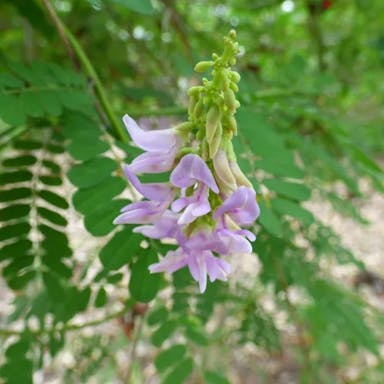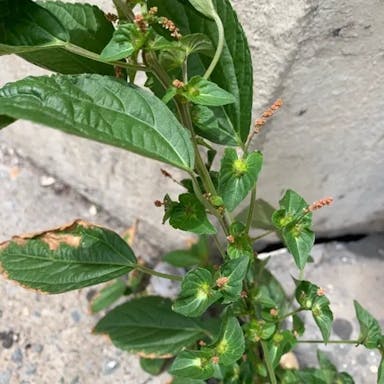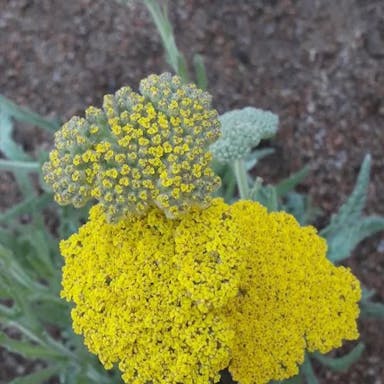White bryony, scientifically Bryonia alba, perennial climbing plant Cucurbitaceae family. Native Europe, North Africa, Western Asia. Long, slender stem tendrils help climb reach heights 3 meters. Leaves palmate deeply lobed, rough texture. Produces small, greenish-white flowers arranged clusters. Flowers five petals unisexual, male female reproductive organs. Blooms May August, attracts pollinators bees butterflies. Fruit round, green berry turns red ripe. Berries toxic not consumed. Large, fleshy root grow 1 meter length. Hardy plant adapt wide range soil conditions. Prefers full sun partial shade requires regular watering. Grown seeds dividing root. However, important note invasive may require regular pruning control growth. In conclusion, climbing plant palmate leaves, greenish-white flowers, toxic red berries. Native Europe, North Africa, Western Asia. Grown variety soil conditions. However, managed carefully prevent invasive nature.
White bryony
- Scientific name
- Bryonia alba
Basic Information
- Cucurbitaceae Family Bryonia Genus White bryony Species
- Cucurbitaceae > Bryonia > Bryonia alba
- 83%
- The Completeness of This Encyclopedia
Please help us complete the encyclopedia, Terrarium is a encyclopedia service to be completed with everyone in the world. Currently, this page is 83% complete. For more information on how to contribute, please click here.
- Forb/herb
- Vine
- Height
- 200cm ~
- Flower Color
- Leaf Color
- Anthesis
- summer
- Sunlight Exposure
Full Sun Long hours of sunlight from morning to afternoon Partial Shade A location in the shade of a tree or where either the morning or afternoon is shaded Full Shade A place where there is no direct sunlight
- Full Sun
- Hardiness Zones
This is an indicator to know to which zone each plant can winter. Knowing the zone of each plant gives you an idea of the cold temperature resistance when grown in the ground without a roof. 2: -42.7 to -40.0 3: -39.9 to -34.4 4: -34.3 to -28.9 5: -28.8 to -23.3 6: -23.2 to -17.8 7: -17.7 to -12.2 8: -12.1 to -6.7 9: -6.6 to -1.1 10: -1.0 to 4.4 11: 4.5 to 10.0
- 6
- Cold resistance
- Good
- Heat resistance
- Fair
- Habitat of origin
- Europe
- Growth Rate
- Normal
What is White bryony (Bryonia alba)?
What is White bryony (Bryonia alba)
Flower meaning
White bryony, also known as Bryonia alba, is not widely recognized for its symbolic meaning in American flower language. However, the language of flowers can vary depending on cultural contexts. It is always best to consider the specific context when interpreting the symbolic meaning of flowers.
Calendar of White bryony (Bryonia alba)
Calendar
White bryony is a plant. It has a blossoming duration from May to July in America. The plant makes young, greenish-white blooms organized in bundles at this time. In June, the blooms of White bryony are most striking, when they are completely open and lively. The blooming period of White bryony regularly endures for a couple of weeks, with singular flowers sprouting for a more limited timeframe. To empower longer sprouting, it is suggested to give the plant satisfactory daylight, water, and supplements. Moreover, deadheading the spent blooms can help advance ceaseless blossoming. It is imperative to take note of that White bryony is viewed as an obtrusive species in a few areas of America, and its development might be controlled or denied.
How to grow White bryony (Bryonia alba)
Watering
White bryony, a plant commonly found in Europe, requires a specific watering regimen to thrive. Six to eight inches deep soil should not be too dry or too wet. Root rot can happen if there is too much water. The leaves and stems grow mostly in the spring, summer, and autumn months. Less rain or watering is needed in winter so the roots don't rot. Check the dirt to see if watering is needed every week or two weeks. This depends on the weather and soil where it is planted.
Soil and Fertilizer
White bryony, scientifically known as Bryonia alba, thrives in well-drained soil with a pH range of 6.0 to 7.5. The soil should be rich in organic matter. It prefers loamy or sandy soil. The soil should be moist but not waterlogged. To ensure optimal growth, apply a balanced fertilizer with equal amounts of nitrogen (N), phosphorus (P), and potassium (K) during spring and early summer. The fertilizer amount depends on soil quality and specific nutrient needs of the plant. A soil test can determine deficiencies and guide fertilizer usage. Apply the fertilizer evenly around the base, avoiding direct contact with stems or leaves. Water in the fertilizer after application for better absorption. Regularly monitor the plant's growth and health to adjust fertilizer as needed. Avoid over-fertilization, which can cause imbalances and harm the plant.
Sunlight and Place
White bryony, scientifically known as Bryonia alba, needs a large amount of sunlight to grow well. This plant handles some cold. It can deal with some heat. But too much heat hurts its growth. The best temperature for White bryony is between 15 to 25 Celsius. In summer, give it enough water. Make sure water drains well. Waterlogged soil is bad. In winter, protect it from frost. Put it inside or cover it. Give White bryony 6 hours of direct sun every day. It does great in full sun. So it's perfect for sunny gardens.
Advanced Information of White bryony (Bryonia alba)
Pruning
White bryony, a perennial vine native to Europe, benefits from regular pruning and cutting back to maintain its health and appearance. In order to manage its enlargement, impede being undersized, and further first-class aerial dispersal, cutting is required. It also assists to eliminate defunct or impaired branches, which can develop the whole intensity of the plant. The optimal period to truncate white bryony is in recent winter or premature spring, prior novel increase starts. To truncate white bryony, start by eliminating any defunct or unhealthy branches, cutting them go back to nourishing paper. Next, thin out the plant by selectively eliminating some of the more mature, woody stems. This disposition hearten novel increase and inhibit the plant from becoming excessively compact. Expend immaculate, incisive cutting shears to construct immaculate cuts fair superior a bud or lateral branch. Subsequent to pruning, it is main to sanitize and dispose of any truncated resources to inhibit the advance of infections or irritants. Habitual pruning and cutting go back disposition assist preserve the fitness and show of white bryony.
Planting and Harvest
White bryony, scientifically known as Bryonia alba, is a climbing perennial plant that can be potted or planted in the ground. When selecting to container the White bryony, it is vital to choose a pot with proper water flow to avoid overwatering. The potting combination should be free-draining and abundant in natural matters. To put the White bryony in a pot, start by filling the pot with the potting mix, leaving space for the plant's roots. Carefully remove the plant from its nursery pot, being cautious not to damage the roots. Put the plant in the center of the pot and fill the remaining space with the potting mix, firmly pressing it around the plant. Provide water to the plant completely after potting. Replacing the pot for White bryony should occur every 2-3 years or when the plant outgrows its current pot. Choose a slightly bigger pot and follow the same procedure as mentioned above. Incorrect care can lead to the decline of White bryony. It is vital to give the plant adequate sunlight, water, and nutrients. Avoid overwatering or letting the soil dry out totally. Regularly check for pests and diseases, and take proper measures if required.
Propagation
White bryony is propagated by various methods. During spring, gather ripe seeds and plant in well-drained soil. Keep moist and give sunlight. To divide, carefully dig up and break root clumps into pieces. Replant divisions in pots or garden. Ensure each has roots and shoots. For cuttings, take 4-6 inch stems from healthy plants in summer. Remove lower leaves and use rooting hormone on cut end. Put in potting mix and keep warm and humid until roots grow. Leaf cuttings also work. Put healthy leaves in a tray of moist soil. Keep tray bright and mist leaves often. Roots will sprout from leaf base. Pot new plants when roots adequate. Collecting seeds or digging up the plant for division or cuttings can be used for harvesting.
Pests and Diseases
White bryony (Bryonia alba) is susceptible to several insects and diseases. A common insect that affects this plant is the fly (Trialeurodes). Flies are small, with wings that feed on the plant's juice, causing yellow and withering leaves. To prevent flies, regular checking and early finding are important. Soapy water or oils can control the amount. Another insect that can attack White bryony is the bug (Aphidoidea). Bugs are small and soft, and suck the juice from the plant. This causes poor growth and strange leaves. To prevent bugs, natural predators like lady beetles can be introduced to the garden. Soapy water or neem oil can also control bugs. White bryony can also get fungal diseases like mildew (Erysiphe). Mildew looks like a white, powdery coating on the leaves, stems, and flowers. To prevent mildew, it is important to allow good air flow around the plant. Avoid watering from above. Chemicals can be used as a last try if the disease continues. Decline of White bryony can be caused by various factors, including drought, poor nutrients, and root rot. Proper watering, fertilizing, and drainage are key to prevent these problems. Regular checks and fast action are needed to keep White bryony healthy and prevent the spread of insects and diseases.
Habitat of White bryony (Bryonia alba)
Habitat
Toxicity of White bryony (Bryonia alba)
Health Benefits
- edible
- Inedible
- Toxic
- toxic
NO DATA
Toxic for dogs and cats
NO DATA
Q&A of White bryony (Bryonia alba)
- Is there a recommended way to choose White bryony?
White bryony, known scientifically as Bryonia dioica, belongs to the cucumber family and is a climbing vine. When choosing types of White bryony, it's key to consider the way they grow and if they might take over. The 'Fenestrata' type has deeply lobed, nice-looking leaves, while 'Variegata' has multi-colored leaves. Another variety, 'Black Nightshade', makes dark purple-black berries that can make people sick if eaten. When you buy White bryony seeds, you need to make sure they are plump, firm, and look good. It's best to get them from respected sellers or nurseries so you know they are good. When picking out White bryony seedlings, choose healthy plants with good roots and stems. Stay away from seedlings with signs of problems or bugs eating them. Put the seedlings in soil that drains well and support them as they climb up. Regular water and fertilizer will help them grow strong. Remember to be careful when touching White bryony, since all parts of the plant can make you sick if eaten. It's a good idea to wear gloves so your skin doesn't get irritated.
- Are Thatch Palm Berries Edible or Toxic?
Thatch Palm Berries, scientifically known as Bryonia alba, are not edible and should be considered toxic. Its compound called bryonin, can cause severe gastrointestinal irritation if ingested. This can lead to symptoms such as vomiting, diarrhea, and pain. In severe cases, ingestion can even lead to death. Therefore, it is strongly advised to avoid consuming Thatch Palm Berries.
- The Medicinal and Poisonous Aspects of White Bryony Berries?
White Bryony berries, scientifically known as Bryonia alba, possess both medicinal and poisonous properties. These berries contain toxic compounds such as bryonin and bryonia. Therefore, while they have potential therapeutic benefits, caution is advised due to their toxic nature. It is recommended to use them under the guidance of a qualified herbalist or healthcare professional.
- What Are the Uses of White Bryony Root?
White Bryony root, called Bryonia alba by scientists, is used in old-fashioned medicine. It can help with swelling and clearing out the body. But you have to be careful. Too much can be poisonous. A doctor should say how much you can take. Sometimes it's put on the skin for problems there. But it might bother the skin, so be careful.











